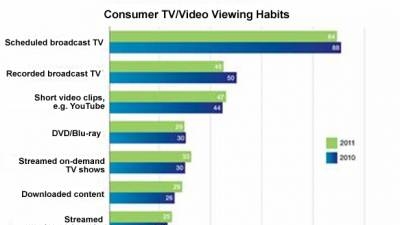New survey finds growth in Internet-based on-demand TV viewing

TV viewers are spending slightly less time watching scheduled broadcast TV and spending more time watching streamed online content, according to the latest annual study of video trends from Ericsson ConsumerLab.
The study, “TV & Video Consumer Trend Report 2011,” found more than 44 percent of the respondents reported watching Internet-based on-demand TV more than once per week, while about 80 percent watch broadcast TV more than once per week.
Data was collected in Australia, Austria, Brazil, China, Germany, the Netherlands, Russia, Spain, Sweden, Taiwan, the UK, the United States and South Korea. In all, 22 qualitative and 13,000 quantitative interviews were conducted representing almost 400 million consumers.
“TV and video have not been negatively affected by the Internet in the same way that print has; we just watch TV in many more ways than we did before,” said Anders Erlandsson, senior advisor at Ericsson ConsumerLab.
Social media usage has made an impact on how people watch TV as well, according to the study. More than 40 percent of the respondents reported using social media on various devices, such as smartphones and tablets while watching TV.
In terms of what consumers want most from their TVs, good quality remains the top factor and is more important than, for example, the availability of 3D TV and access to applications, the survey found. The service consumers are most willing to pay for is getting movies that are still running in movie theaters.
The survey also shows how many hours per week on average people are spending watching TV and the percentage of the total viewing that is on-demand content. People in Germany spend no less than 25 hours per week watching TV and video, but only 28 percent of this content is on-demand. In Spain, 44 percent of all TV viewing is on-demand.
The professional video industry's #1 source for news, trends and product and tech information. Sign up below.
